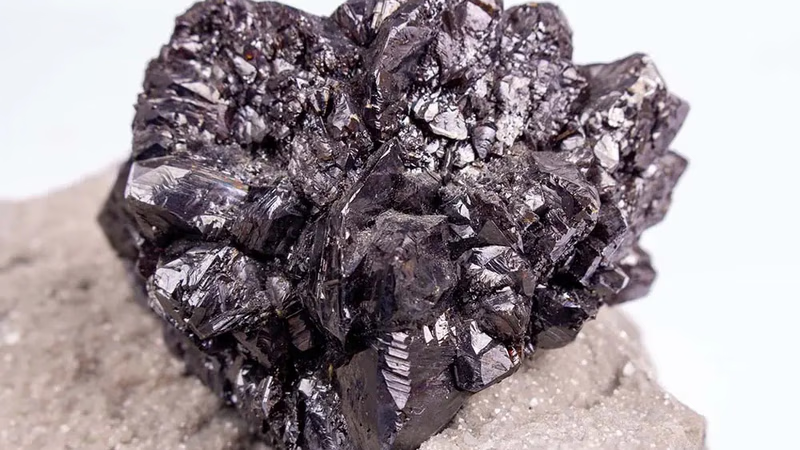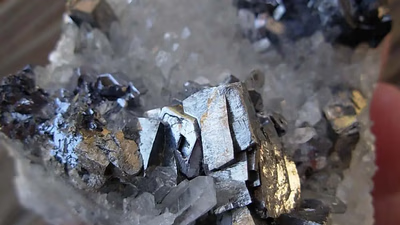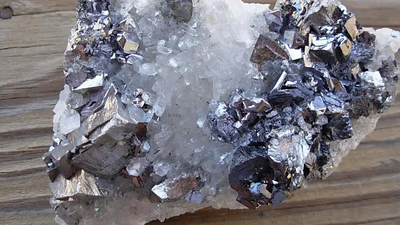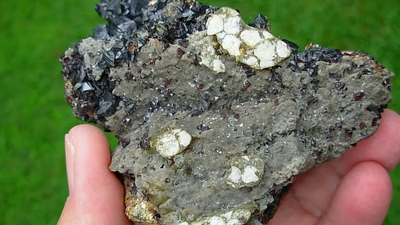
Explore major sphalerite mines and their global impact.
The Teresa mine is located in the state of Chihuahua in Mexico and is known as one of the largest sphalerite mines in the world. This mine has a high production of zinc and its sphalerite production rate is also significant. Red Dog Mine is located in the state of Alaska in the United States of America. This mine is one of the largest zinc and sphalerite mines in the world and is known as one of the main sources of zinc production in America. McArthur River Mine is located in Stanton, Australia and is known as one of the largest sphalerite and zinc mines in the world. This mine has a high production of zinc and sphalerite and plays an important role in the Australian mining industry. Lifian mine is located in the province of New Brunswick in Canada. This mine is one of the largest sphalerite mines in Canada and has reliable production of this mineral.
Red Dog Mine is located in British Columbia, Canada. This mine is also known as one of the largest sphalerite mines in the world and includes a significant production of this mineral. The best spherolite in the world may be mined in several different regions and countries. But one of the areas known for the finest spherolite is the MacArthur River mine in Australia. This mine is located in the state of Western Australia and is known as one of the largest and best spherolite mines in the world. The sphalerite extracted from this mine usually has a high level of purity and quality.
- China is the largest producer and exporter of sphalerite ore in the world. This country uses sphalerite in various industrial sectors, including steel, batteries, chemical industries and construction, and accounts for a significant part of global production.
- Australia is also one of the largest producers and exporters of sphalerite in the world. McArthur River mine in Australia is known as one of the largest sphalerite mines in the world and has significant production in this country.
- Canada is also one of the important producers and exporters of sphalerite. Mines such as Ruddock Creek Mine in British Columbia and Lefroy Mine in New Brunswick in Canada have significant production of this mineral.
- Mexico is one of the countries producing sphalerite in the world. Tres Marias Mine in the state of Chihuahua is one of the largest mines of this mineral in the world and has a significant production of it.
- Peru is also one of the most important producers of sphalerite in the world. Areas such as Ica and Huancavelica in Peru have large sphalerite mines where the mineral is produced and exported.
Existence of extractable reserves and high production capability in a country can make it one of the largest producers of sphalerite in the world. Countries with large reserves of sphalerite and the ability to continuously mine and produce it usually excel in the export ranking of this mineral. A country's ability to produce and process sphalerite and turn it into final products is important. Countries that have strong mineral and metal industries and use advanced technologies to extract and process sphalerite can excel in the export ranking of this mineral. The demand for sphalerite in various industries such as steel, batteries, chemical industries and construction can have a significant impact on the export of this mineral.
Countries that are known as target markets for sphalerite-containing products and have high domestic or foreign demand can rank high in sphalerite exports. Government policies can have a great impact on the development and growth of the sphalerite industry in a country. Support policies for the mining industry, investment in research and development, financial and tax facilities, issuance of mining and export licenses, and other government measures can affect a country's ranking in sphalerite exports. The geographical location of a country can also have an effect on the export of sphalerite. Having strong logistics infrastructure such as ports, efficient transportation routes and reliable distribution networks can also contribute to a country's ranking in sphalerite exports.
-

The article discusses the largest sphalerite mines globally, highlighting key locations such as the Teresa mine in Mexico, Red Dog Mine in Alaska, and McArthur River Mine in Australia. These mines are significant for their high production rates of sphalerite and zinc, essential minerals used in various industries including steel and batteries. China stands out as the largest producer and exporter of sphalerite ore, followed by Australia and Canada. The article emphasizes that countries with substantial extractable reserves and advanced mining technologies excel in sphalerite production and exportation. Additionally, it notes that government policies, investment in research, and strong logistics infrastructure play crucial roles in enhancing a country"s position in the global sphalerite market. The demand for sphalerite across multiple sectors influences export rankings significantly. "
-

Sphalerite export and marketing are influenced by global supply and demand, particularly in the steel industry. Price fluctuations can complicate pricing strategies, while competition among exporters necessitates a focus on quality and marketing differentiation. Export regulations, including financial and environmental laws, pose additional challenges. Political and economic shifts in both exporting and importing countries can impact trade dynamics significantly. Establishing strong business relationships is crucial; networking through exhibitions, conferences, and online resources can enhance market access. Utilizing business databases and industry forums aids in identifying potential buyers and partners. Thorough market research is essential for understanding pricing trends, demand, and reliable partners. Verifying the legitimacy of potential collaborators through documentation is vital to avoid fraud risks such as price gouging or false representations.
Engaging with professional networks can provide valuable insights and support in navigating the sphalerite market. A robust marketing strategy that leverages multiple channels will facilitate effective communication with customers while minimizing exposure to scams. Risk assessments should be conducted before any business dealings to ensure safety in transactions. Prioritizing sphalerites with international certifications can enhance trustworthiness.
-

Iran, Saudi Arabia, and Oman are key producers of sphalerite in West Asia, with Iran holding the largest reserves. The mineral is essential for steel production and is exported primarily to China and India, which are major consumers. Turkey also plays a significant role in the sphalerite market as a consumer. The extraction technology varies across the region, with some countries leading in advanced mining techniques while others lag behind. Modern methods are being developed globally to enhance productivity and minimize environmental impact. The demand for sphalerite may lead to imports if domestic production cannot meet local needs, influenced by factors such as quality, price, and trade agreements. Countries like Iraq and the UAE also contribute to the consumption of zinc metal derived from sphalerite, highlighting the interconnected nature of regional supply chains.
-

Sphalerite, a zinc sulfide mineral with the formula PbS, is the primary source of zinc metal production. Found in sedimentary rocks and various global mines, it plays a crucial role in industries such as automotive, electronics, construction, and food. The mineral was first identified in 1923 by British explorers Herbert Williamson and Carl Davis near Newcastle, England. Sphalerite is characterized by its black to dark gray color due to iron content and has a hardness of 2. 5 to 3 on the Mohs scale. Its density ranges from 7. 2 to 7. 6 grams per cubic centimeter, aiding in its identification among other minerals.
The extraction process can be conducted through underground or open-pit mining methods. Zinc derived from sphalerite is essential for manufacturing components like batteries, pipes, and electronic devices. Additionally, it serves as a rustproofing agent in construction and enhances glass properties in the glass industry. Laboratory detection methods for sphalerite include X-ray analysis and scanning electron microscopy.




